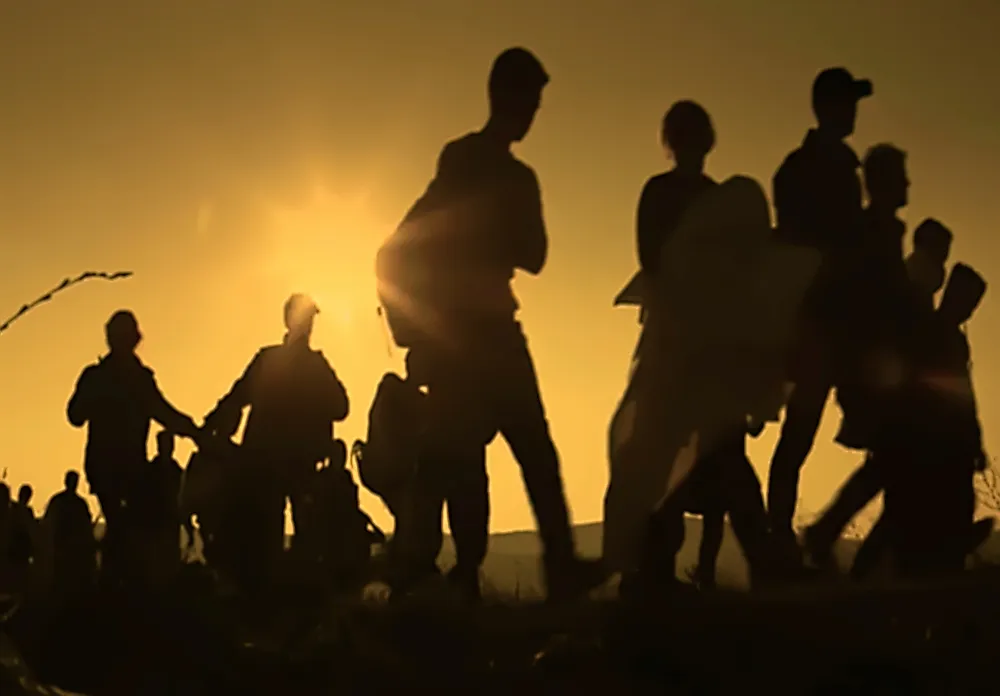The Largest Human Migrations of the 20th Century

Human migration is a phenomenon whereby people move from one region to another with the aim of living in a new area temporarily or permanently. The most common form of migration occurs when individuals move from one area to another within the same country. An individual may choose to migrate on their own or as part of a larger unit which in most cases includes a group of related people.
Migration experts do not consider movements by nomadic communities to be migrations as they only occur during specific seasons. Migration may happen for a variety of reasons such as people fleeing war-torn regions or looking for better economic opportunities. Due to the different nature of migration, some terms have been developed to describe the different types of migrants such as refugees, displaced people, and asylum seekers. Migration became more prevalent during the 20th century because of the improvement of transport systems around the world. Some events have also contributed to the massive waves of migration witnessed during these centuries.
Industrialization
One of the factors that contributed to significant migration was industrialization. The development of industrial technologies meant that jobs were more concentrated in some regions of the world than in others, which acted as a major pull factor for migrants. During the 20th century, massive improvements in the transportation industry were witnessed which also contributed to mass migration.
Industrialization also contributed to colonization. Apart from people moving to the colonized countries, individuals also moved from the colonies to the colonizing nations. One of the areas that attracted vast numbers of people during the industrialization period was the United States.
Internal Migration In The US
Apart from people from different nations moving into the US, some of the migration during the industrial revolution period was internal. According to some estimates over a 60 year period, from 1910 to around 1970, more than 7 million African Americans moved from rural areas in the US, mainly in the southern areas, to settle in the more industrialized cities located in the Midwest and Western regions. Besides migrating in search of better economic prospects, African Americans also migrated to escape social prejudice prevalent in the southern areas of the US. Due to the massive number of people involved in the migration, historians refer to the phenomenon as the Great Migration.
Wars During The 20th Century
One of the significant causes of migration during the 20th century was conflict. The First and Second World Wars were two of the defining events of the 20th century as they affected the lives of millions. One of the communities that migrated as a result of the First World War was the Muslim community living in the Balkan region. A significant portion of the Muslim population left the Balkan area and settled in Turkey. In contrast, Christian communities moved from Turkey to the Balkan region. The Armenian community also fled from turkey due to the constant oppression by the Ottoman Empire. Another war that contributed to the migration of a large section of the population was the Russian Civil War. The war was one of the bloodiest in Russia's history as it resulted in the death of close to 8,000,000 people according to some estimates. To escape the bloodshed, more than 3,000,000 people fled from Russia. Some of the communities that fled the nation were the Poles, the Russians, and the Germans. During the Second World War, a massive number of Jewish people fled from Europe to avoid Nazi persecution.
Potsdam Agreement
After the Second World War ended, the victorious nations signed the Potsdam Agreement that resulted in one of the largest migrations ever witnessed within Europe's borders as more than 20,000,000 people were involved. One of the communities that were significantly affected was the Germans living in Eastern Europe. Estimates indicate that more than 16,000,000 Germans were forced to move from nations in Eastern and Central Europe back to their native home in Germany. The Second World War also resulted in several colonized nations gaining their independence. As a result of the countries gaining independence, several people from the colonizing nation moved back to their home countries. Another war that caused mass migration during the 20th century was the Rwandan Civil War. A large section of the Rwandese population moved to neighboring countries to escape the war.
Partition Of India
Another major event during the 20th century was the partition of India that resulted in the establishment of two distinct dominions, India and Pakistan. The two dominions would later become independent nations. Most of the people who migrated as a result of the partition moved due to their religious beliefs. The people who moved to Pakistan were mainly Muslims while the people who moved to India were typically Hindus and Sikhs. Migration is still prevalent in present-day India and Pakistan.
The Impact Of Migration
Migration has a significant effect on both the region where people are moving to and the regions where they are moving from especially if it involves vast numbers of people. In the region where people are moving from, there is a reduction in the available labor force which has a negative impact on the economy. On the other hand, in the region where people move to there is an increase in the available labor force.











